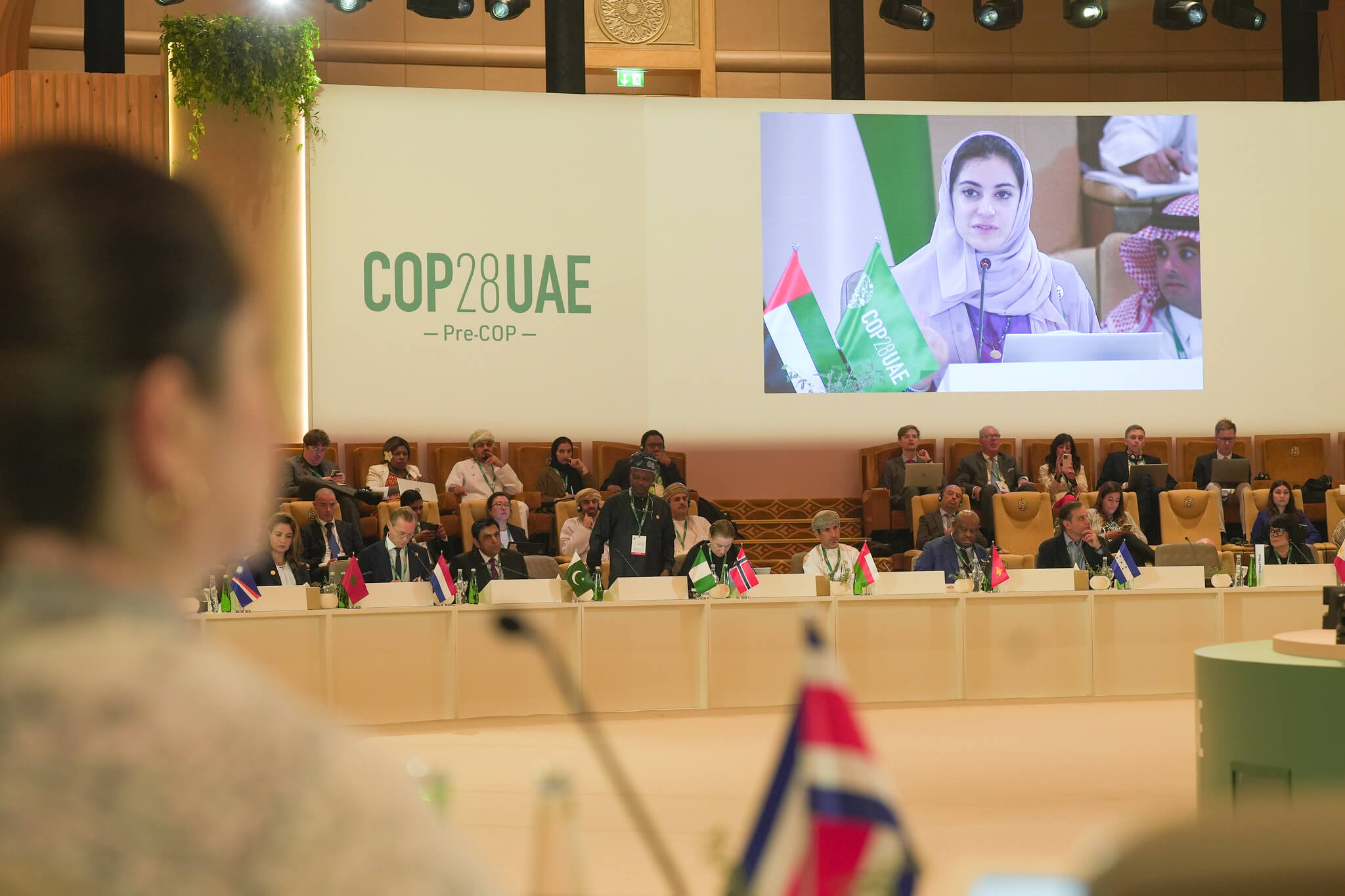
The series explored the potential contours of the Global Stocktake (GST) through the lenses of each of the Paris Agreement’s three long term goals - mitigation, adaptation, and finance, with equity as a cross-cutting consideration.
 Over the past month, ClimateWorks Foundation hosted the independent Global Stocktake (iGST) webinar series, “A Vision for a Robust Global Stocktake,” which explored the potential contours of the Global Stocktake (GST) through the lenses of each of the Paris Agreement’s three long term goals – mitigation, adaptation, and finance, with equity as a cross-cutting consideration. As we wrap up the series and look toward COP 25 and 2020, we wanted to reflect on what we learned.
Over the past month, ClimateWorks Foundation hosted the independent Global Stocktake (iGST) webinar series, “A Vision for a Robust Global Stocktake,” which explored the potential contours of the Global Stocktake (GST) through the lenses of each of the Paris Agreement’s three long term goals – mitigation, adaptation, and finance, with equity as a cross-cutting consideration. As we wrap up the series and look toward COP 25 and 2020, we wanted to reflect on what we learned.
What can we expect from the GST?
The three webinars presented information on the data sources and coverage expected from the GST. They also began to suggest complementary roles for the iGST.
- Mitigation (presented by The University of Maryland Center for Global Sustainability): mitigation-related indicators run the gamut from techno-economic to more qualitative and diffuse. The GST’s mandate is to take stock collectively, which means complementary processes are necessary to get to the national level. In general, it is easier to obtain and summarize the quantitative information and harder to obtain and summarize qualitative information. While it is not clear exactly what will be included in the official GST, it is likely to focus on quantitative indicators explaining the questions of ‘where are we?’ and ‘where do we want to go?’. Partners proposed that the iGST focus on sharpening our understanding of barriers, capacity, and enabling conditions, issues that are really at the heart of ‘how do we get there?’ but are less well synthesized at present. Full notes can be accessed here.
- Adaptation (presented by the UNEP DTU Partnership): the data sources feeding into the GST are defined as the UNFCCC country submissions (including Adaptation Communications, Biennial Transparency Reports, National Adaptation Plans, and National Determined Contributions, all to be compiled in a synthesis report), IPCC reports, and other sources. In general, these data sources are flexible rather than mandatory, contain little standardized information fit for aggregation, and occur on timelines that may not align with the GST. The currently defined data sources are unlikely to meet all the four functions of the GST for adaptation, as defined in Article 7 of the Paris Agreement. We can, however, expect the GST to include nationally relevant, qualitative data on the state of adaptation efforts, experience, and priorities at national level. The iGST, meanwhile, can potentially contribute by clarifying what to track, proposing how to track it, and addressing empirical issues. Full notes can be accessed here.
- Finance (presented by the Overseas Development Institute): the GST will include the latest information from the Overview of Climate Finance Flows (Biennial Assessment), which includes information about the $100b per year pledged by developed countries to developing countries, the breakdown of public spending between mitigation and adaptation, aspects relating to the effectiveness of finance, and some information about whether economy-wide financial flows are consistent with Paris goals. Other inputs to the GST include voluntary submissions from parties, relevant reports from regional groups and institutions, and submissions from non-party stakeholder and UNFCCC observer institutions. Within this landscape, the iGST could help fill data gaps around issues like domestic finance; work to harmonize understanding on difficult topics like loss and damage finance and consistency of finance with Paris Agreement goals; and/or support understandings of finance at the national and sectoral level to bolster the ambition of NDCs. Full notes can be accessed here.
Webinar recordings are available upon request.
How might the independent community help with stocktaking?
One goal of this webinar series was to create active dialogue with our broader community. Through these discussions, we continued to add nuance to our understanding of how the iGST can complement the existing landscape of initiatives and began to clarify essential equity considerations, critical issues that deserve blog posts of their own but that we’ll only mention briefly here. Importantly, we also thought more about the future direction of iGST work. Here is a trifecta of takeaways on that subject:
- The iGST can help cross-walk between national and international: The GST is bound to be collective, but benchmarks could still help make it nationally relevant, and both beforehand and in the wake of each GST there is space to make national actions more ambitious and effective. National and international efforts bolster each other via a complex interplay, but ultimately most action ‘comes to ground’ on national and sub-national levels. Toward this end, advocates emphasized that they would like information that allows them to better assess the ambition of individual countries and identify where they can increase ambition. There was a suggestion that the international stocktake could be paralleled with national and city-level versions. We’re still figuring out exactly how the iGST engages on the national, regional, and/or sectoral levels, but this is an area where we’re hoping to build further next year.
- We need not shy away from difficult issues, i.e., including uncertainty of temperature rise: Beyond just targeting ‘low-hanging fruit’, respondents emphasized that the iGST could potentially leverage its independence to help build clarity on difficult issues unlikely to be included or even acknowledged in the GST, such as how to achieve a 1.5 degree world; the implications of negative emission technologies; adaptation under various temperature scenarios, including those that may exceed the <2 degree goal; and harmonization of understanding of tricky finance issues like loss and damage finance and climate-aligned finance. While we aren’t likely to solve these underlying issues, we may be able to foster conversation and build alignment.
- There’s less familiarity on adaptation and finance: There has been less collective thinking on adaptation and finance within the Global Stocktake frame compared to mitigation, yet all three will be critical to the success of the GST. In the case of adaptation, this may in part be due to data availability challenges. Yet it would be a shame if these topics got shortchanged in stocktaking exercises as a result of lack of data or interest from the independent community, particularly when impressive partner initiatives like the Global Adaptation Mapping Initiative (GAMI) are working hard to fill data gaps.
The bullets above touch on issues that are far larger than the iGST. Yet rather than let the scale and complexity of these topics daunt or distract us, our hope is to leverage the iGST as one strategic frame from which to address these issues, much as we hope the GST can serve as a galvanizing force in the Paris Agreement. We’re excited to work with the broader community to keep learning.


